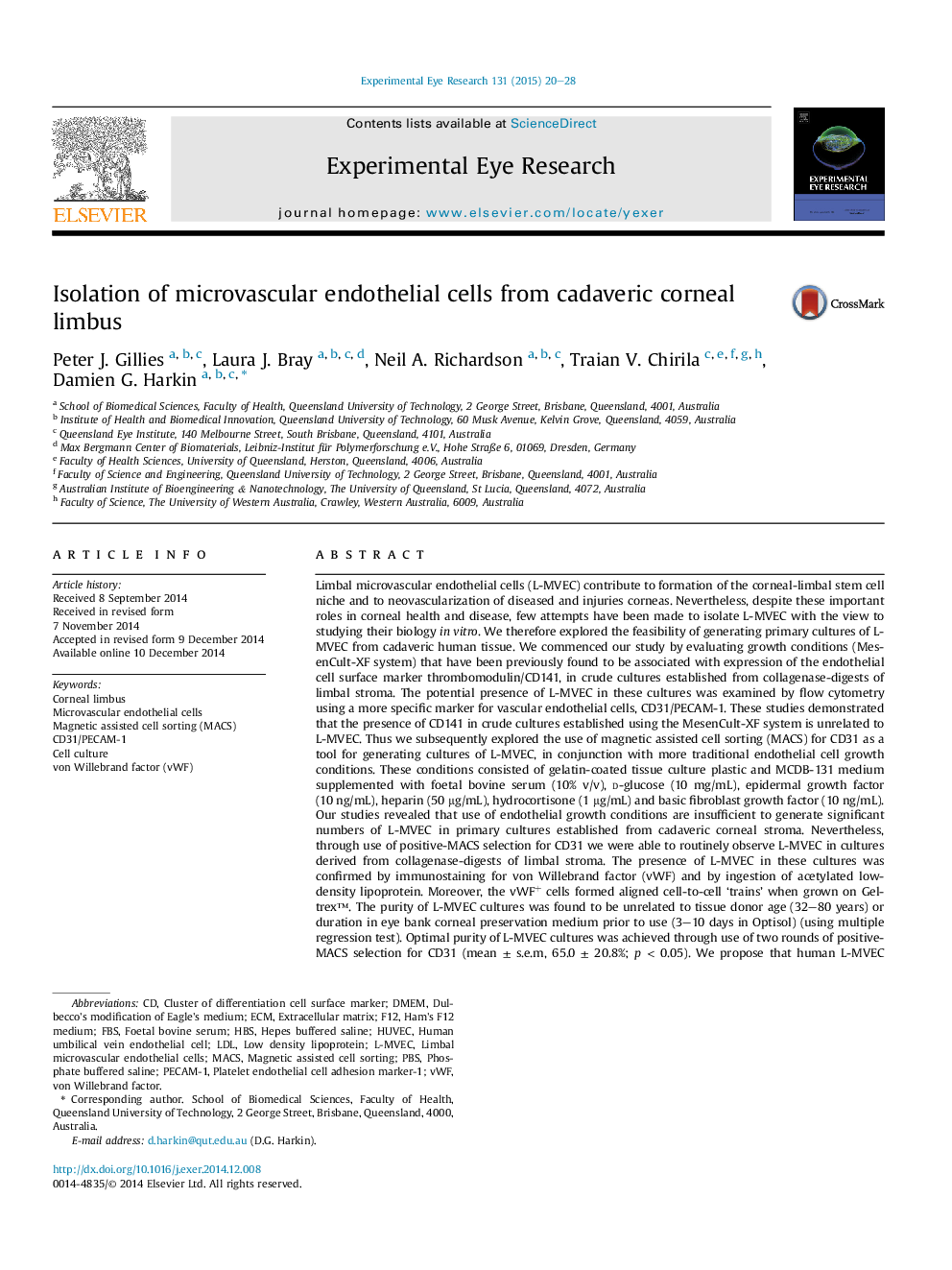| کد مقاله | کد نشریه | سال انتشار | مقاله انگلیسی | نسخه تمام متن |
|---|---|---|---|---|
| 6196683 | 1602591 | 2015 | 9 صفحه PDF | دانلود رایگان |
- MACS supports isolation of microvascular endothelial cells from human corneal limbus.
- Neither donor age (31-80 years) nor time in storage (2-11 days) effect culture purity.
- Optimal purity of cultures is achieved using two rounds of positive selection for CD31.
- The cultures express vWF, endocytose acetylated LDL and form cell trains on Geltrexâ¢.
Limbal microvascular endothelial cells (L-MVEC) contribute to formation of the corneal-limbal stem cell niche and to neovascularization of diseased and injuries corneas. Nevertheless, despite these important roles in corneal health and disease, few attempts have been made to isolate L-MVEC with the view to studying their biology in vitro. We therefore explored the feasibility of generating primary cultures of L-MVEC from cadaveric human tissue. We commenced our study by evaluating growth conditions (MesenCult-XF system) that have been previously found to be associated with expression of the endothelial cell surface marker thrombomodulin/CD141, in crude cultures established from collagenase-digests of limbal stroma. The potential presence of L-MVEC in these cultures was examined by flow cytometry using a more specific marker for vascular endothelial cells, CD31/PECAM-1. These studies demonstrated that the presence of CD141 in crude cultures established using the MesenCult-XF system is unrelated to L-MVEC. Thus we subsequently explored the use of magnetic assisted cell sorting (MACS) for CD31 as a tool for generating cultures of L-MVEC, in conjunction with more traditional endothelial cell growth conditions. These conditions consisted of gelatin-coated tissue culture plastic and MCDB-131 medium supplemented with foetal bovine serum (10% v/v), d-glucose (10 mg/mL), epidermal growth factor (10 ng/mL), heparin (50 μg/mL), hydrocortisone (1 μg/mL) and basic fibroblast growth factor (10 ng/mL). Our studies revealed that use of endothelial growth conditions are insufficient to generate significant numbers of L-MVEC in primary cultures established from cadaveric corneal stroma. Nevertheless, through use of positive-MACS selection for CD31 we were able to routinely observe L-MVEC in cultures derived from collagenase-digests of limbal stroma. The presence of L-MVEC in these cultures was confirmed by immunostaining for von Willebrand factor (vWF) and by ingestion of acetylated low-density lipoprotein. Moreover, the vWF+ cells formed aligned cell-to-cell 'trains' when grown on Geltrexâ¢. The purity of L-MVEC cultures was found to be unrelated to tissue donor age (32-80 years) or duration in eye bank corneal preservation medium prior to use (3-10 days in Optisol) (using multiple regression test). Optimal purity of L-MVEC cultures was achieved through use of two rounds of positive-MACS selection for CD31 (mean ± s.e.m, 65.0 ± 20.8%; p < 0.05). We propose that human L-MVEC cultures generated through these techniques, in conjunction with other cell types, will provide a useful tool for exploring the mechanisms of blood vessel cell growth in vitro.
Journal: Experimental Eye Research - Volume 131, February 2015, Pages 20-28
